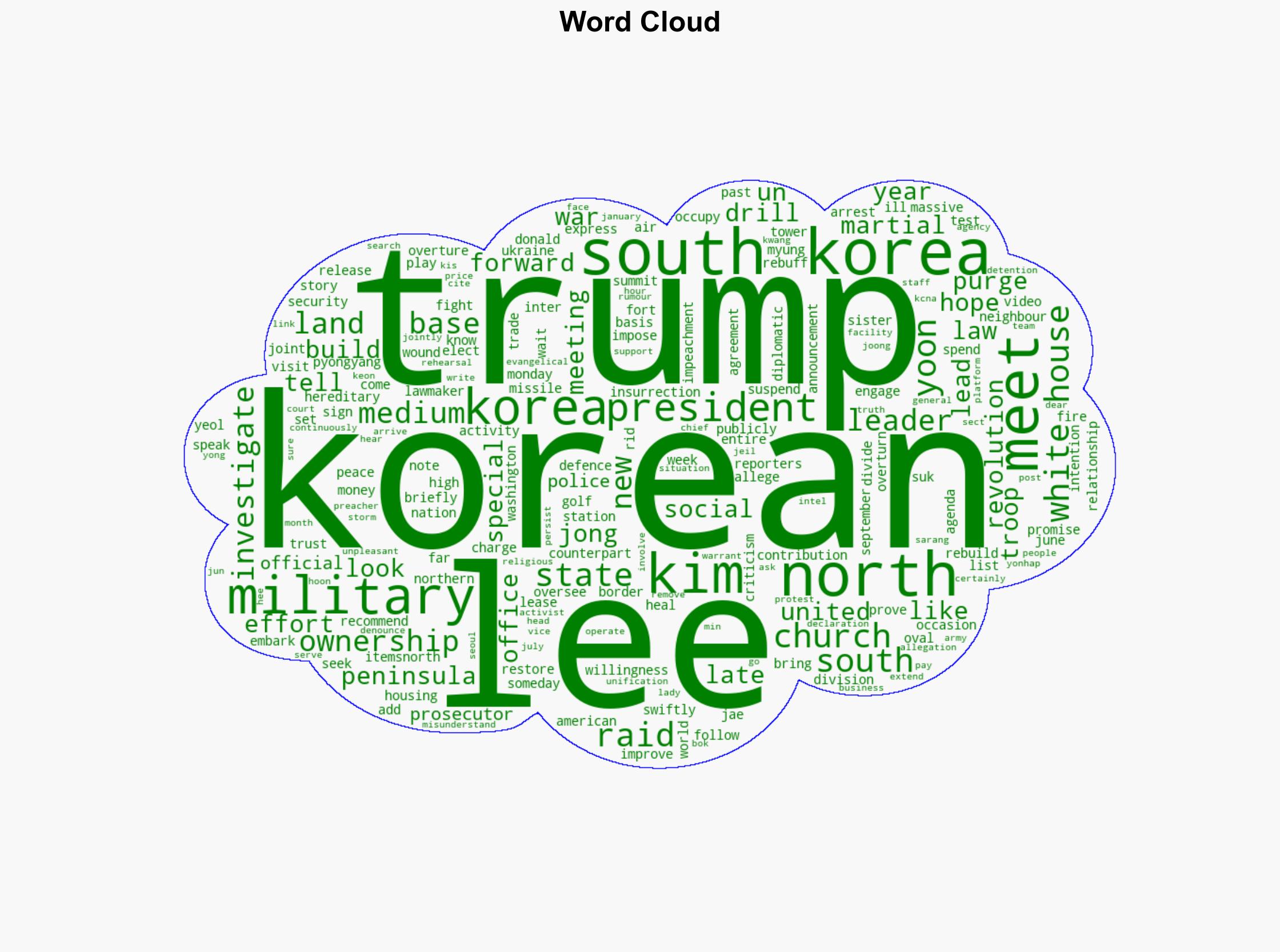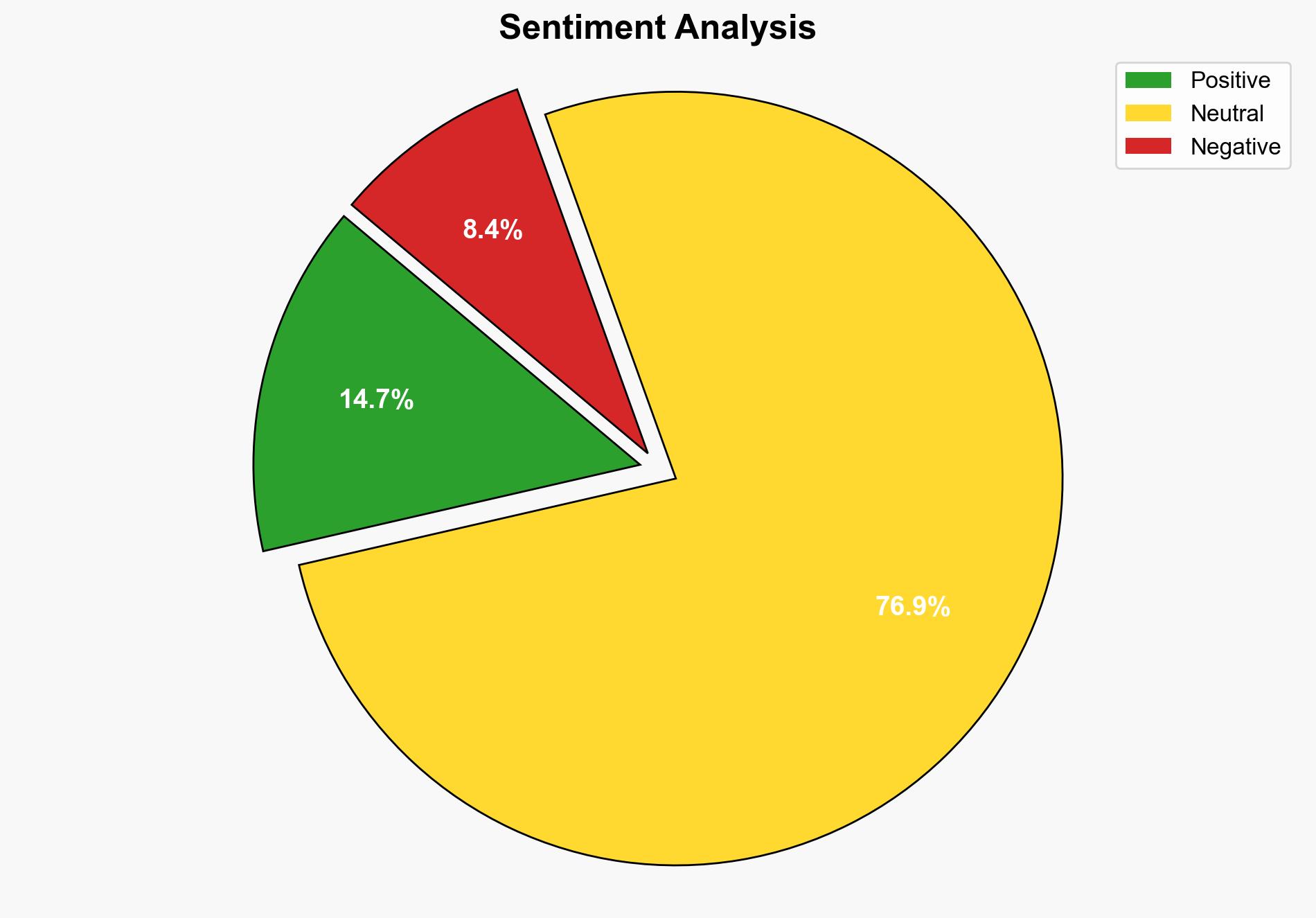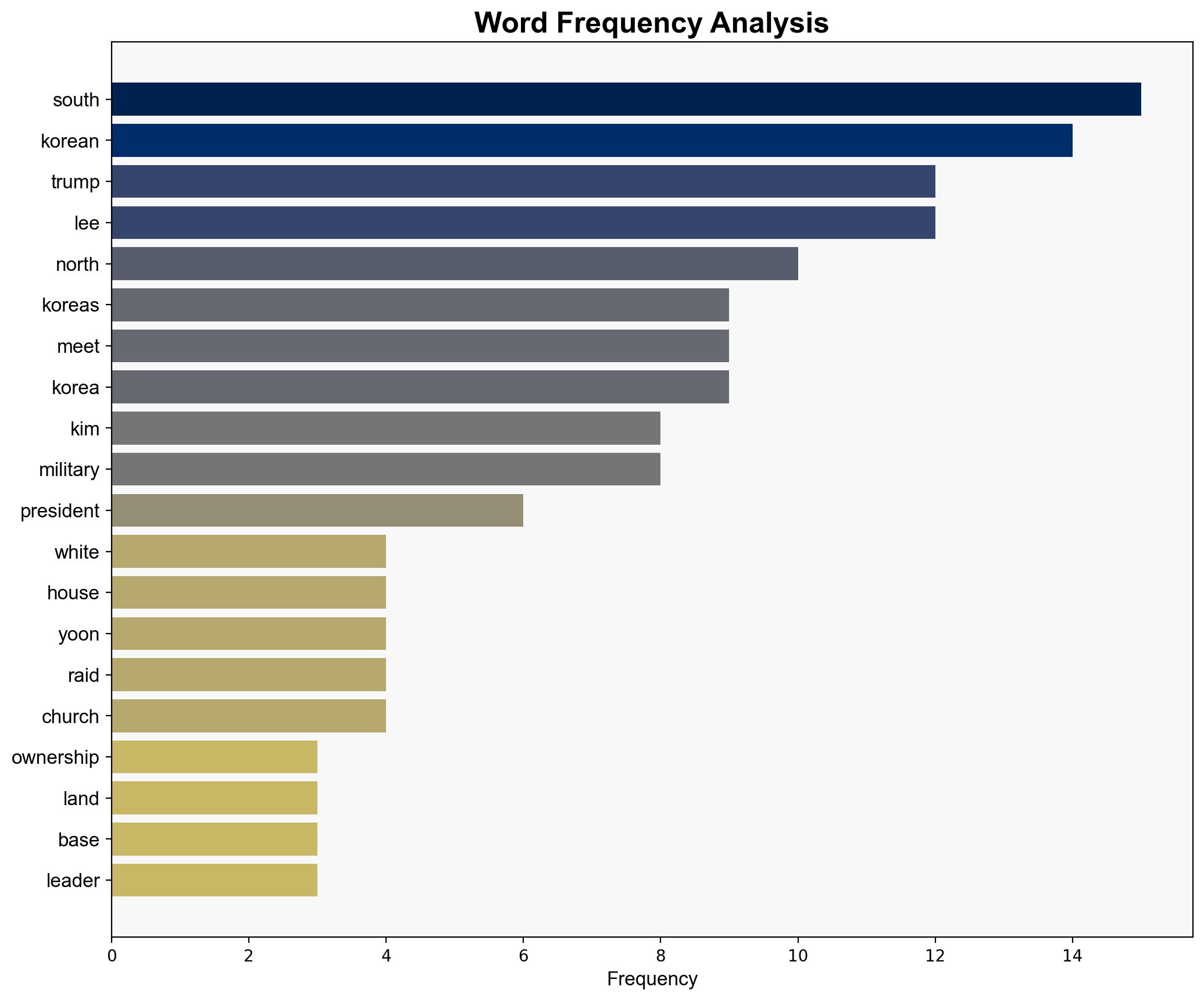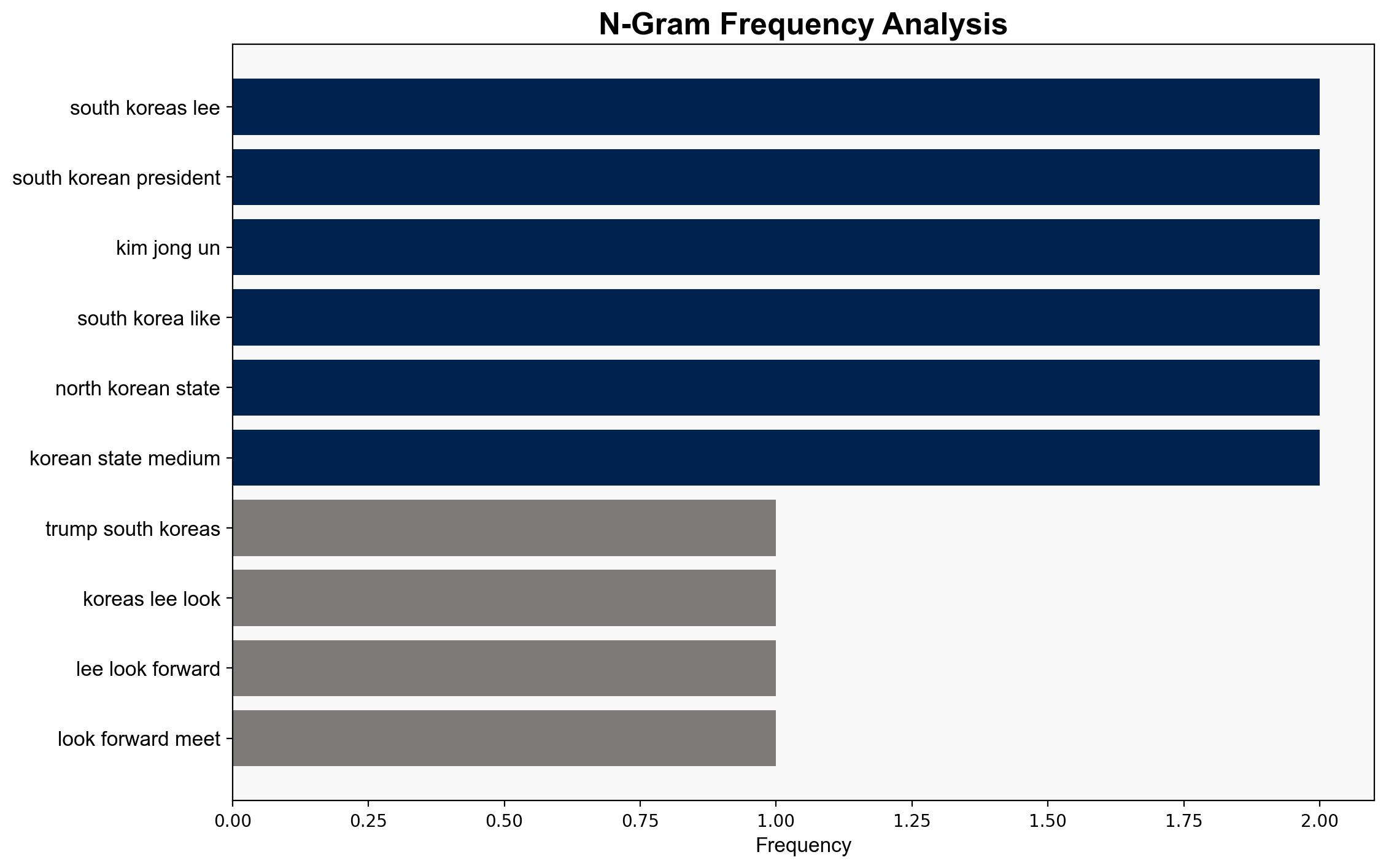Trump to South Koreas Lee Look forward to meeting N Koreas Kim Jong Un – Al Jazeera English
Published on: 2025-08-26
Intelligence Report: Trump to South Koreas Lee Look forward to meeting N Koreas Kim Jong Un – Al Jazeera English
1. BLUF (Bottom Line Up Front)
The most supported hypothesis is that the meeting between Donald Trump and Lee Jae-myung aims to establish a diplomatic framework for future engagement with North Korea, potentially reducing tensions on the Korean Peninsula. Confidence in this hypothesis is moderate due to conflicting signals from North Korea and ongoing military activities. Recommended action includes diplomatic engagement with both Koreas to clarify intentions and mitigate risks of miscommunication.
2. Competing Hypotheses
1. **Diplomatic Engagement Hypothesis**: The meeting between Trump and Lee is primarily aimed at setting the stage for future diplomatic engagement with North Korea, potentially leading to reduced tensions and increased stability on the Korean Peninsula.
2. **Strategic Posturing Hypothesis**: The meeting is a strategic move by Trump to assert influence in the region, leveraging the potential meeting with Kim Jong Un as a means to strengthen U.S. geopolitical standing and pressure North Korea into concessions.
Using ACH 2.0, the Diplomatic Engagement Hypothesis is better supported by Lee’s expressed willingness to heal divisions and his efforts to restore military agreements. However, the Strategic Posturing Hypothesis is also plausible given the military drills and Trump’s history of using high-profile meetings for strategic leverage.
3. Key Assumptions and Red Flags
– **Assumptions**: It is assumed that both Trump and Lee are genuinely interested in reducing tensions with North Korea. It is also assumed that North Korea’s recent military activities are not a direct response to the meeting but rather part of ongoing strategic posturing.
– **Red Flags**: North Korea’s criticism of military drills and the potential for misinterpretation of intentions by all parties involved. The lack of direct communication from North Korea regarding their stance on the proposed meeting.
– **Blind Spots**: Potential internal political pressures on Lee and Trump that may influence their public statements and actions.
4. Implications and Strategic Risks
– **Geopolitical Risks**: Escalation of tensions if North Korea perceives the meeting as a threat or if military drills are seen as provocative.
– **Economic Risks**: Potential impact on regional markets if tensions escalate or if diplomatic efforts fail.
– **Psychological Risks**: Miscommunication leading to increased distrust among involved parties.
– **Cascading Threats**: Increased military posturing by North Korea could lead to a regional arms race or destabilize existing alliances.
5. Recommendations and Outlook
- Engage in back-channel communications with North Korea to clarify intentions and reduce the risk of misinterpretation.
- Encourage transparency in military activities to build trust and reduce tensions.
- Scenario Projections:
- **Best Case**: Successful diplomatic engagement leads to a reduction in military tensions and improved relations between North and South Korea.
- **Worst Case**: Miscommunication leads to increased military tensions and potential conflict.
- **Most Likely**: Continued diplomatic efforts with intermittent military posturing by North Korea.
6. Key Individuals and Entities
– Donald Trump
– Lee Jae-myung
– Kim Jong Un
– Kim Yong Bok
– Min Joong Ki
– Jun Kwang Hoon
7. Thematic Tags
national security threats, geopolitical strategy, diplomatic engagement, regional stability




